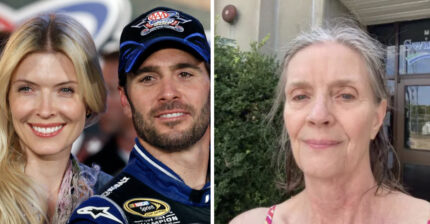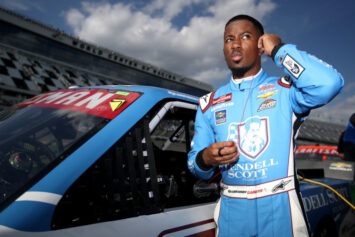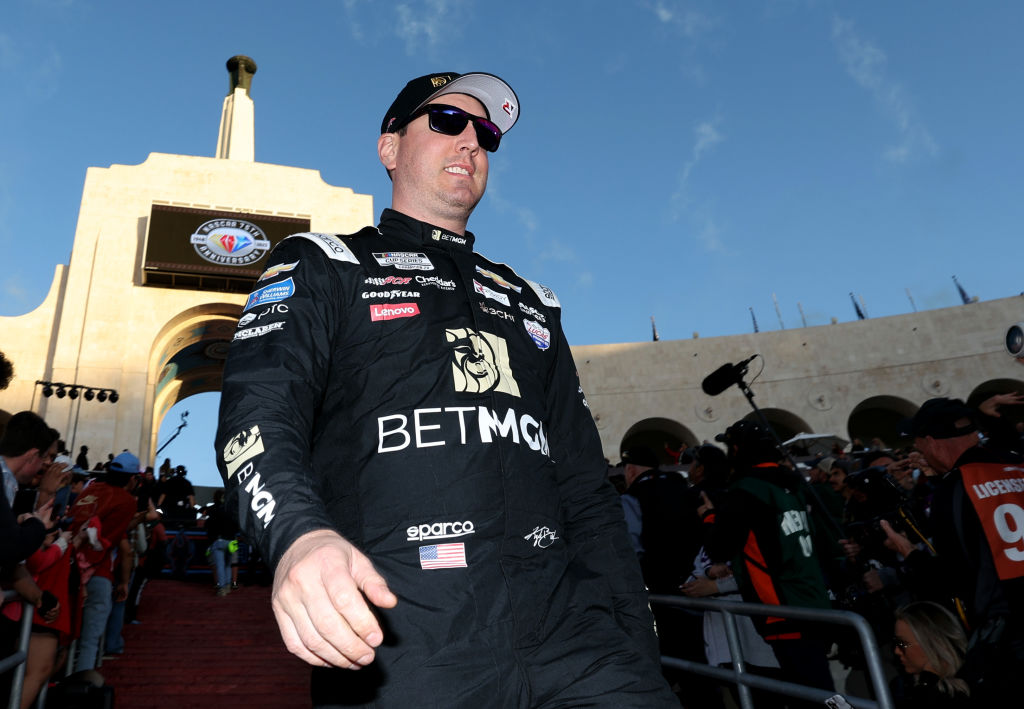Picture this: 1963 at Speedway Park, a one-mile dirt track in Jacksonville, Florida where stock car racers like Coo Coo Marlin, Earl Brooks, Fireball Roberts, Ralph Earnhardt and Glen Wood all cemented their legend behind the wheel. Wendell Scott, a black driver, the only black driver in the history of The National Association for Stock Car Auto Racing at the time, driving the Chevrolet Bel Air he’d purchased from Ned Jarrett, passes the legendary Richard Petty with 25 laps to go in the 200-lap race, eyeing a clear path to the winner’s circle. He’s rolling with rush, riding the wave of revving engines and high-octane smoke stacks. Peeling away from the thundering herd with pedal lurching toward metal, Scott—widely considered the Jackie Robinson of NASCAR—is speeding to a place called “going too goddamned fast” while spiked on adrenaline and the thirst for victory.
Scott was in the zone.
The Danville, Va. native then beats the highly touted Buck Baker handily, two laps out in front of the field, but sees the checkered flag wave for the man who comes in behind him, in second.
Huh?
There he was, the first black stock car racer to ever notch a Cup-level NASCAR victory, losing at winning. Getting the okey-doke when he should have been kissing the race queen, when “they” should have been kissing the ring. This was Southern-stock car racing at its most racist, its most exclusionary.
NASCAR didn’t uphold Scott’s win until all the fans had left the track. When there would be no roar of the crowd, no rapturous applause, no victory speech, no victory lap, no trophy.
This is the legacy of African-Americans in NASCAR. Scott “won” that day, but didn’t get his trophy until four weeks later before a race in Savannah, Ga. What’s worse is there hasn’t been a single major victory for a black driver in the sport since.
50 years and counting.
The fact that the DAYTONA 500 is called “The Great American Race” is a blatantly appalling double entendre. Where’s the diversity? Where’s the great American melting pot? And while Danica Patrick made NASCAR history by becoming the first woman to win a pole for a NASCAR Sprint Cup Series event, there are still no drivers of color on the 2.5-mile tri-oval this year. None.
So when one wonders why the commercial juggernaut that is NASCAR has failed to attract a significant black and brown following, well, duh, that’s a good place to start. But are we dealing with a lost cause, here?
**********
This much we know: NASCAR is digging out of a deep hole.
You might be a redneck if…you love NASCAR. This is the general consensus of NASCAR’s fan base and it’s not just amongst blacks. Off the record, a NASCAR insider revealed that Non-Southern whites don’t like NASCAR because of its redneck image. They don’t like it. Don’t want to be grouped in with a fanbase whose reputation is one of a tobacco spittin’, trailer park livin’, gun rack totin’ and Confederate Flag wavin’ horde that live and breathe America’s fastest-growing sport, second only to the National Football League in television viewers. I guess the success of Will Ferrell’s Talladega Nights: The Ballad of Ricky Bobby should have been a clue.
“Southern whites are very ingrained in whatever bigotry and prejudices that they have,” said Phil Horton, Director of Athletic Performance for Rev Racing, NASCAR’s Drive for Diversity’s development program for minority and female drivers and crewmembers. “But I will say this: If it had been as bad as people think it is, I would not have been as successful as I have been.”
President of NASCAR Mike Helton believes that the sport has shaken its “redneck image.”
"We believe strongly that the old Southeastern redneck heritage that we had is no longer in existence," said Helton. "But we also realize that there's going to have to be an effort on our part to convince others to understand that."
But do black folks even care?
The stats say hell to the no. At least comparatively speaking. According to NASCAR’s own research, 8.6 percent of its total fan base is black.
Blacks aren’t lining up to support NASCAR because it’s hard to identify with. There are no black superheroes in NASCAR. There’s no Tiger Woods or Ray Lewis or LeBron James strapped in Legends and Bandolero cars rollin’ with the winners at your local Speedway.
Since Scott’s days, no black drivers at all, until Bill Lester entered two Cup events in 2006.
“We recognize the problem,” said Marcus Jadotte, head of NASCAR's public affairs division, where his duties include supervising the Drive for Diversity program. “That’s why there’s a very strong interest in inviting a multicultural audience to buy into the sport. It’s a multifaceted approach. I work very closely with our partners at Rev Racing to actively participate in the sport.”
If black folk don’t see their version of “us” mixed in with “them,” they don’t support it. That goes for most things, but especially NASCAR given its history. Give blacks someone they can get behind in a major race and they’d all pour into the stands at the Speedway like they did when Jackie debuted at Wrigley in ’47.
“To have a more diverse audience, we need to be a more diverse sport,” said Jadotte. “But it hasn’t been easy. Without a doubt, we are not where we wanna be. We’ve got a lot of work ahead of us, but at no point in the history of the sport have we had more diverse participation at every level of the sport. I would point to the great work and athlete development being done through our Drive for Diversity program at Rev Racing. We’ve made real progress and real traction in increasing the number of minorities who are in the sport and thriving in the sport.”
“We don’t want to be in,” said Horton. “I wish that wasn’t the case, because I love the sport, but it's a tough sell because the stigma of NASCAR is huge. NASCAR is a Southern-based regional type of sport, so blacks are not beating down the door to get in NASCAR by any stretch of the imagination.”
Many race-weary cynics consider NASCAR a cruel hoax of a sport, but as much as there has been a thick cloud of racism amongst race fans, there has never been more of a color deterrent than green, or lack thereof. See, blacks have hit the same roadblocks since the time of Scott. If he’d have had the greenbacks that today’s hip-hop consigliere throw around in strip clubs for fun, he’d have been more Mario Andretti than Mario Andretti ever was. But alas, Scott didn’t have corporate sponsors backing him with stacks.
“The biggest hurdle has been the cost of participating in the sport,” said Jadotte. “In basketball, all that’s required to participate in the sport is a court and a basketball. Very little equipment is needed. The same is true for football. In racing, the cost of acquiring the equipment needed is much higher. If you’re a dad and you want your son or daughter to get involved in auto racing when they’re six or seven years old, you’ve got to make a commitment of thousands of dollars to buy a go-cart and that’s before helmet and safety equipment. That creates a significant barrier to entry that’s cost driven.”
**********
Darrell Wallace Jr. has a lot riding on his shoulders. In a sport desperate for its first black superstar, its first marketable minority driver, the 19-year old, who made his Nationwide Series debut last year with four starts, including three top ten finishes and his first pole award at Dover International Raceway, could be D4D’s best shot at developing a successful driver in NASCAR’s elite Sprint Cup level.
“He’s somebody with promising talent, who is an African-American, who came through our diversity program,” said NASCAR CEO Brian France. “Look, that’s a breakthrough if it materializes, and if not him, there’ll be somebody who’s going to walk in the door and be a star and it’s going to be good for us.”
In eight years, some 40 drivers have participated in D4D’s program with limited success. Wallace breaking through means everything.
“This is exciting for Darrell, for Joe Gibbs Racing and really for NASCAR I believe,” said Joe Gibbs, owner of Joe Gibbs Racing about Wallace running a full season schedule in the NASCAR Camping World Truck Series. “NASCAR has made tremendous progress through their diversity program and we started our diversity program 10 years ago with Reggie White in hopes of providing opportunities to drivers we think have the ability to grow in our sport. We really feel that Darrell is a guy that has a gift behind the wheel.”
Gibbs, most people may remember, was the head coach of the Washington Redskins when Doug Williams became the first black quarterback to start in a Super Bowl.
Wallace isn’t the only one running NASCAR’s race trying to chase mass appeal. Tia Norfleet, daughter of racecar legend Bobby Norfleet, has been breaking barriers of her own. If the 25-year-old continues to do well, her impact on the sport could mirror that of Venus and Serena in the world of tennis.
In a Washington Post article, Norfleet mentioned that she hopes to make a difference as the sole African-American woman on the circuit and that she’s happy that NASCAR is making a concerted effort to change the way people think of the sport.
Currently, NASCAR boasts fans with a median age of 51.6. Having an older fan base than every major sport in the U.S. prompted NASCAR to create an industry action plan to attract a younger, multicultural audience. But for all of NASCAR’s politicking for minority fandom, the absence of color in the field of teams at the Daytona International Speedway speaks volumes about how difficult the job of diversifying the sport has been and, unfortunately, always will be.
“I’m in my ninth year here at NASCAR and I have now been in charge of overseeing our diversity programs for all but two years of my tenure,” said Jadotte. “That’s more than half the life of the program. NASCAR has made a significant investment in increasing the level of diversity in the sport and it’s a long-term commitment. It’s certainly not going to happen overnight. We want to get young black kids interested in cars to try the sport early on and adopt it as their sport of choice. They will be more likely to become fans if they try it early on.”
People talk about what a diverse pool of drivers would do to NASCAR, what it would do to the sport, what it would do for the sport. Would it ruin it? Would it push it forward? For his part, Jadotte feels like progress is being made, however slowly, and that the sport’s drive towards diversity is on the right track.
“The program has delivered on what it set out to do, which is to create opportunities for young minority and female aspiring drivers to participate in NASCAR developmental series,” said Jadotte.
With a more diverse field of drivers, NASCAR may be able to one day be the kind of sport that warrants the “where were you when” moment. You know, like, where were you when MJ hit “The Shot” over Craig Ehlo, or, where were you when Doug Williams won the Super Bowl for the ’Skins.
But for now, NASCAR is, essentially, stuck in the same diversity rut it’s been trying to climb out of since Wendell’s days. Is NASCAR really trying to court black and brown fans and participants or is it selling diversity wolf-tickets? Is exclusionary opposition from its fans holding NASCAR back or is apathy to its outreach? Right now, we have more questions than answers. Deep-rooted issues with attempted resolutions that don’t scratch the surface. The saga continues.
But, Sunday in Daytona, peep that checkered flag waving at the start and finish lines—it’s white and black. Dig?



